Oxford, AL – This week, Calhoun County hosted a county-wide meeting to discuss the current and future state of Emergency Medical Services (EMS) in the region. County Administrator Jonathan Gaddy opened the meeting, welcoming local leaders, city officials, and EMS representatives. The event aimed to address growing concerns surrounding EMS services, particularly in unincorporated areas of the county, as well as explore potential solutions for long-term sustainability.
The meeting was attended by a host of local leaders, including Senator Keith Kelley, Representatives Mark Gidley and Chad Robertson, County Commissioners Carolyn Henderson and Danny Shears, and several mayors from across the county: Oxford Mayor Alton Craft, Anniston Mayor Jack Draper, Weaver Mayor Jeff Clendenning, Ohatchee Mayor Steve Braswell, and Piedmont Mayor Bill Baker. Board of Education members Tobi Burt and Michael Webb were also present, along with fire chiefs and EMS directors from across the county
Gaddy emphasized the importance of the meeting, noting the nationwide EMS crisis driven by a variety of factors, including recruitment challenges, compensation issues, and rising operational costs. “There are a lot of factors at play, from Medicare and Medicaid reimbursement issues to the stresses of the job. This is a very complicated issue, but it’s one we need to address for the future of our county,” Gaddy explained.
He highlighted that Calhoun County has historically been fortunate in terms of EMS services, with a combination of private, city-run, and volunteer organizations contributing to public safety. However, he acknowledged that changes are necessary to ensure these services remain operational and effective.
“Calhoun County has always invested in public safety, and we have a level of capability here that other counties may not have,” said Gaddy. “But the situation is evolving, and the county is now being asked to provide more support for EMS services, particularly in unincorporated areas.”
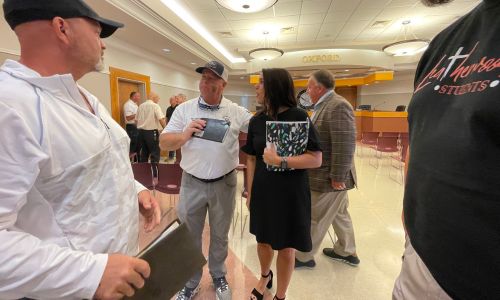
During the meeting, participants heard from a committee led by Chief Sparks, who has been working with local fire departments, EMS agencies, and county officials to identify and address challenges. Gaddy praised Sparks for his leadership and dedication to finding viable solutions for the future of EMS in Calhoun County.
Also present at the meeting were local fire chiefs and EMS directors, including Anniston Fire Chief Jeff Waldrep, Jacksonville Fire Chief Keith Kadle, Piedmont Rescue’s Pat Brown, Anniston EMS Director Johnny Warren, and Oxford EMS Director Tom Dixon. Gaddy commended their work and emphasized the collaborative effort needed to ensure a viable future for EMS services in the county.
“This is just the first step in a conversation we need to have,” Gaddy said, stressing the importance of collaboration between the county and its municipalities. “What happens in the unincorporated parts of the county affects everyone. This is about ensuring that every resident has access to critical public safety services, no matter where they live.”
The meeting marked a significant step toward addressing the growing challenges facing EMS services in Calhoun County, with further discussions and initiatives expected in the coming months.
During the meeting, Oxford Fire Chief and Calhoun County 911 President, Gary Sparks, emphasized the importance of collaboration in addressing the county’s EMS challenges. He explained that a committee consisting of EMS agencies and local fire chiefs had been meeting for several weeks to tackle this widespread issue, which affects not just the county, but also the state and nation. Drawing a comparison to past crises, such as the tornadoes in 2011 and 2018, he highlighted how Calhoun County banded together during those emergencies when no outside help was available. The chief stressed that this same spirit of unity is needed to solve the EMS problem locally, while acknowledging that assistance from state leaders like Senator Keith Kelley and Representatives Mark Gidley and Chad Robertson is critical for any meaningful progress. He made it clear that no single entity is to blame, and that continued cooperation between local and state authorities is essential for finding a solution.
Johnny Warren, owner of Anniston EMS, discussed the financial strain EMS services face due to rising costs and inadequate reimbursement rates.
Key Financial Challenges:
- Ambulance Costs: Ambulance prices have increased over 30% in two years, from $123,000 to $169,000, placing a burden on services that need to replace vehicles regularly.
- Medical Supply and Fuel Expenses: Anniston EMS spends $7,000 to $10,000 monthly on medical supplies and around $7,000 on fuel, both of which have risen sharply.
- Insurance Costs: Last year, vehicle insurance costs were $9,200 per month, and Warren expects this to rise.
- Non-Emergency Calls: 24% of their calls do not result in patient transport, leading to zero revenue despite EMS still needing to respond.
- Substation and Staffing: A substation in Choccolocco would improve response times, but the investment needed—$500,000 to $600,000 annually—outweighs the call volume revenue.
- Low Reimbursement Rates: Alabama’s EMS reimbursement rates are much lower than in neighboring states, with collections from private payers at just 3.4%.
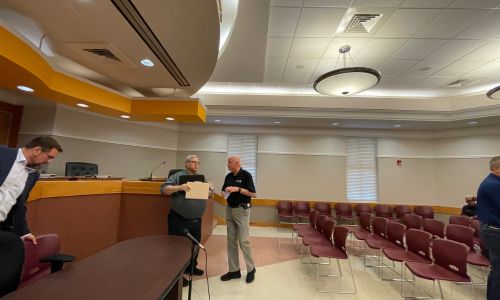
Warren made it clear that EMS services are facing a perfect storm of rising costs, inadequate reimbursement rates, and increasing operational challenges. He stressed the need for the state and local communities to understand these financial pressures and support EMS services, as their sustainability is critical for public health. Warren also highlighted the difficulty of paying EMS staff competitive wages in such a financially strained environment, as well as the stress placed on medics who frequently deal with non-emergency situations. Despite these challenges, Warren expressed his commitment to continuing operations and working with legislators to find long-term solutions.
Pat Brown, Director of the Piedmont Rescue Squad and Calhoun County Coroner, agreed with Johnny Warren’s concerns and provided additional insights into the significant financial challenges facing EMS services. He noted that running an ambulance costs between $210 to $250 per hour, and each call, even for minor issues like lift assists or routine blood pressure checks before appointments, costs around $1,200. With a large percentage of patients uninsured, EMS services often struggle to recover expenses, leading to a financial gap that they must bridge.

Brown explained that Piedmont Rescue covers a vast area approxmlat;y 70-80% of the county’s unincorporated areas. This makes operational costs higher because, unlike more densely populated urban areas, route density is low, increasing the time and cost associated with responding to calls.
He also described the issue of “wall times,” where EMS personnel must wait at hospitals for patients to be admitted, sometimes for more than two hours, further increasing costs since ambulances and staff remain tied up during these periods. Brown specifically mentioned Gadsden hospitals having wall times over two hours, with no reimbursement for that lost time.
On top of operational issues, equipment costs have soared. A single monitor now costs $75,000—up from $48,000 just six months ago—while stretchers cost around $30,000, and the devices used to hold the stretchers are another $30,000 each. Liability insurance has also risen dramatically. Brown’s monthly premiums increased from $6,300 to $23,000 after two accidents, despite both incidents being the fault of other drivers. This steep increase, he said, puts tremendous financial strain on EMS services and can push them toward closure.
Brown emphasized that these rising costs are unsustainable, and while EMS providers strive to serve the community, funding gaps mean that services could be cut. He urged local leaders and the community to recognize these challenges and work together to find solutions, stressing that without collective support, EMS services might not be able to continue operating at the current level.
Tom Dixon, Director of Oxford EMS, addressed the financial difficulties facing the emergency medical services in the city, giving insight into both operational costs and revenue shortfalls. He began by explaining that in the last fiscal year, Oxford EMS responded to 7,281 calls, transporting 5,386 individuals to hospitals. The projected cost to provide EMS services for the next fiscal year will be $6.5 million. Breaking down the numbers, Dixon highlighted that each call costs approximately $1,219, yet EMS only brings in about $470 per call through insurance payments, leaving a deficit of $749 per call.
To illustrate the financial burden, Dixon noted that even if they removed some additional services, such as blood administration or community paramedic visits, and only handled 911 calls (4,922 calls last year), the cost of operating would still be $6 million.
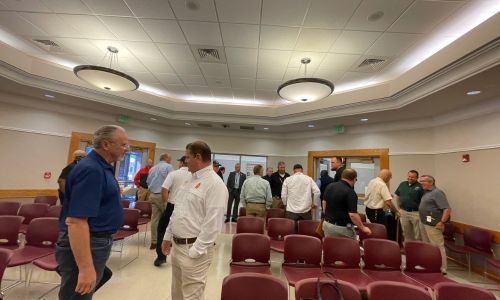
Dixon emphasized that one of the biggest financial challenges stems from mandated insurance adjustments. Last year, Oxford EMS had to write off $7 million in adjustments, which are essentially discounted rates negotiated by insurance companies like Blue Cross Blue Shield. In addition, they wrote off $1,376,000 for taxpaying residents who couldn’t afford to pay their ambulance bills, contributing to the overall financial loss.
Dixon described how these financial pressures force Oxford EMS to adjust off four times the revenue they bring in due to insurance rules. This leads to significant write-offs, with half of their potential revenue lost because of unpaid bills from citizens who either lack insurance or are unable to pay the remaining balance after insurance coverage.
He highlighted how this situation is not unique to Oxford but a widespread issue across EMS services nationwide. He remarked on the “perfect storm” created by systemic healthcare problems, including the Affordable Care Act (Obamacare) and the ongoing pandemic, which have severely impacted EMS services and are putting pressure on city governments everywhere. Drawing on his long experience in EMS and education, Dixon shared an op-ed he personally wrote, reflecting on how these challenges have accumulated and continue to burden emergency medical services across the country.
In his remarks, Jacksonville Fire Chief Keith Kadle addressed several pressing issues related to emergency medical services (EMS) funding and operational challenges in Calhoun County. He emphasized the significant expenses associated with maintaining EMS, citing that the city recently purchased two remounted ambulances for a combined $416,000, which are not luxury models. He further detailed that essential equipment, such as monitors costing $45,000 and cot loaders priced at $60,000, are critical yet expensive and have expiration dates, necessitating frequent replacements.
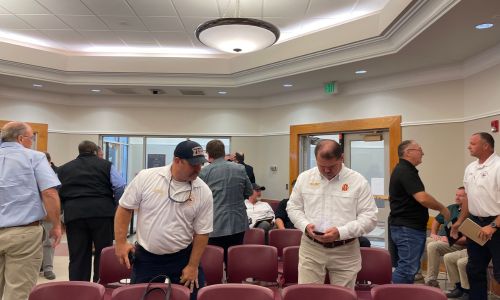
Kadle highlighted the socioeconomic challenges facing the community, noting that many residents in outlying areas rely on EMS for primary care due to financial constraints. This leads to frequent calls for non-emergency situations and for some using EMS as a primary provider for issues such as asthma attacks or seizures amoung other issues. The paramedics get on scene and treat them and then the patiets do not want to be trasposted to the hostiptal which lead EMS to be unable to recoup losses associated. He also mentioned that the COVID-19 pandemic has exacerbated workforce shortages in EMS, with many professionals leaving the industry due to low pay and high stress, creating additional challenges for service delivery.
To address rising call volumes, Kadle indicated that adding a new crew in Jacksonville would cost around $575,000 for the first year, with ongoing annual increases. He shared a recent experience where his team responded to three emergency calls within eight minutes, highlighting the urgent nature of their work and the limitations posed by the county’s rural landscape, which affects response times.
Kadle concluded by acknowledging the widespread nature of these challenges, asserting that they are not isolated issues but rather systemic problems that impact the entire county and beyond. He urged consideration of potential tax solutions to help address the financial shortfall in EMS funding, recognizing that the need for emergency services is universal and may affect anyone in the community at any time.
Anniston Fire Chief Jeff Waldrep explained that the Anniston Fire Department operates differently from traditional EMS services, as they utilize fire trucks instead of ambulances for emergency medical services (EMS). This means they provide critical EMS support within their jurisdiction but do not transport patients, which limits their ability to charge for services rendered. He highlighted the financial impact of this model, stating that it costs the department approximately $570 for each EMS call. Over the past year, they responded to about 2,400 calls within the city and the surrounding areas.
Waldrep acknowledged the strain this places on the department’s budget, noting that their operations are primarily tax-funded. He expressed gratitude for the community’s support and underscored the need for collaboration to develop a sustainable solution for emergency services. He believes that by working together, they can create a model that addresses the challenges faced by EMS providers not just in Anniston but potentially across the entire state.
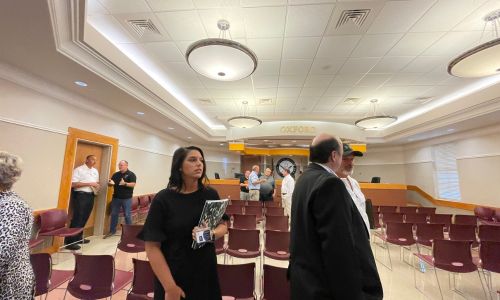
Piedmont Fire Chief Todd Kirkland, who also serves as the President of the Calhoun County Volunteer Fire Association, discussed the challenges faced by volunteer fire departments in the region regarding responding to medical calls. He noted that four departments in the county, alongside ambulance services, provide EMS coverage. However, there is a growing concern that these EMS services may reduce their coverage areas to primarily focus on city responses, which would have significant repercussions for rural areas in the county. Kirkland emphasized that the majority of the EMS calls are currently handled by Piedmont and other nearby services, leading to long response times for emergencies in more remote areas. Only licensed EMS providers can transport which volunteer fire departments typically do not have.
He expressed concern that adding EMS responsibilities without adequate funding could quickly deplete their financial resources, prompting them to revisit the funding issue in the near future. Kirkland reiterated that these challenges are not isolated to Calhoun County but reflect broader issues related to EMS recruitment, retention, and funding that are being experienced statewide and nationwide.
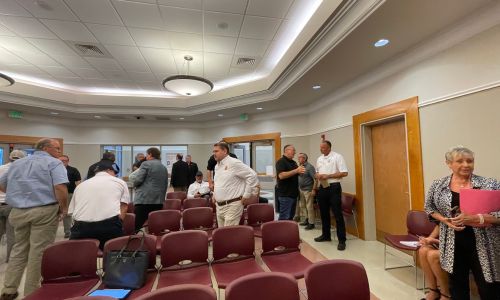
Commission Chairwoman Carolyn Henderson shared the unsustainable nature of continuously funding EMS and related services Commissioner Danny Shears echoed Henderson’s sentiments, acknowledging the difficult situation and praising the efforts of his colleagues. He expressed faith in the community and its leadership, emphasizing that Calhoun County could become a model for other areas if they collaboratively solve these EMS issues. Shears highlighted the critical nature of EMS coverage, noting the dire consequences if residents were unable to receive timely assistance in emergencies. He stressed the importance of prioritizing citizens’ safety, including in schools, and expressed confidence that the group would find a long-term solution for providing essential EMS services.
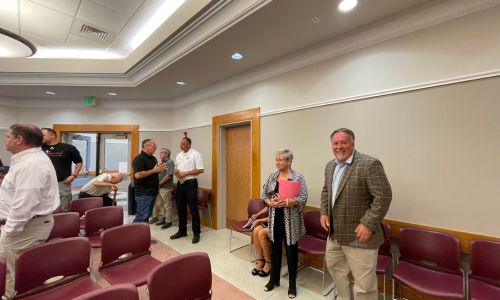
As the meeting concluded, participants emphasized the urgency of addressing the EMS challenges facing Calhoun County. Leaders recognized that collaboration among local governments, state officials, and EMS providers is essential to finding sustainable solutions. With rising costs and increasing demands on services, a unified approach will be crucial in ensuring that all residents, especially those in unincorporated areas, continue to receive timely and effective emergency medical care. The discussion highlighted the community’s resilience and commitment to public safety, setting the stage for ongoing dialogue and action as they work together to secure the future of EMS in Calhoun County.











